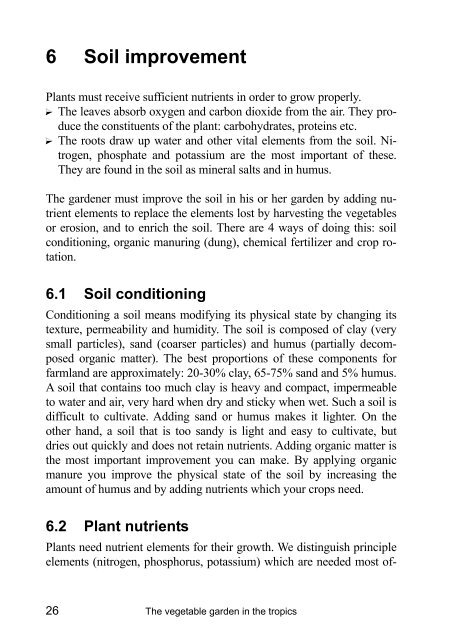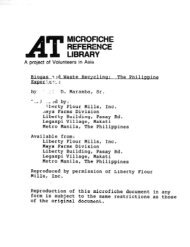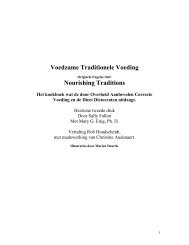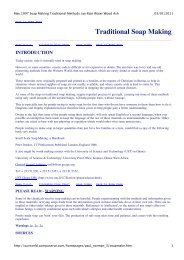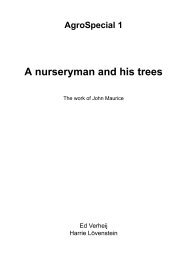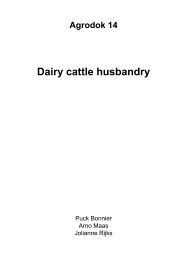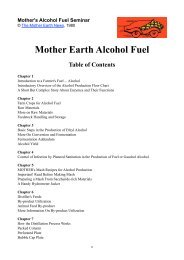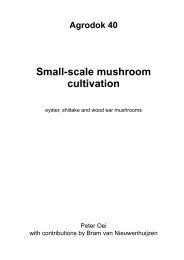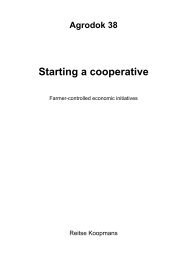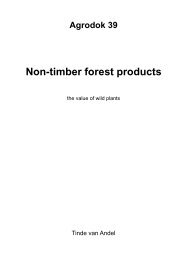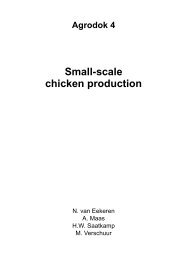The vegetable garden in the tropics - Journey to Forever
The vegetable garden in the tropics - Journey to Forever
The vegetable garden in the tropics - Journey to Forever
Create successful ePaper yourself
Turn your PDF publications into a flip-book with our unique Google optimized e-Paper software.
6 Soil improvement<br />
Plants must receive sufficient nutrients <strong>in</strong> order <strong>to</strong> grow properly.<br />
? <strong>The</strong> leaves absorb oxygen and carbon dioxide from <strong>the</strong> air. <strong>The</strong>y produce<br />
<strong>the</strong> constituents of <strong>the</strong> plant: carbohydrates, prote<strong>in</strong>s etc.<br />
? <strong>The</strong> roots draw up water and o<strong>the</strong>r vital elements from <strong>the</strong> soil. Nitrogen,<br />
phosphate and potassium are <strong>the</strong> most important of <strong>the</strong>se.<br />
<strong>The</strong>y are found <strong>in</strong> <strong>the</strong> soil as m<strong>in</strong>eral salts and <strong>in</strong> humus.<br />
<strong>The</strong> <strong>garden</strong>er must improve <strong>the</strong> soil <strong>in</strong> his or her <strong>garden</strong> by add<strong>in</strong>g nutrient<br />
elements <strong>to</strong> replace <strong>the</strong> elements lost by harvest<strong>in</strong>g <strong>the</strong> <strong>vegetable</strong>s<br />
or erosion, and <strong>to</strong> enrich <strong>the</strong> soil. <strong>The</strong>re are 4 ways of do<strong>in</strong>g this: soil<br />
condition<strong>in</strong>g, organic manur<strong>in</strong>g (dung), chemical fertilizer and crop rotation.<br />
6.1 Soil condition<strong>in</strong>g<br />
Condition<strong>in</strong>g a soil means modify<strong>in</strong>g its physical state by chang<strong>in</strong>g its<br />
texture, permeability and humidity. <strong>The</strong> soil is composed of clay (very<br />
small particles), sand (coarser particles) and humus (partially decomposed<br />
organic matter). <strong>The</strong> best proportions of <strong>the</strong>se components for<br />
farmland are approximately: 20-30% clay, 65-75% sand and 5% humus.<br />
A soil that conta<strong>in</strong>s <strong>to</strong>o much clay is heavy and compact, impermeable<br />
<strong>to</strong> water and air, very hard when dry and sticky when wet. Such a soil is<br />
difficult <strong>to</strong> cultivate. Add<strong>in</strong>g sand or humus makes it lighter. On <strong>the</strong><br />
o<strong>the</strong>r hand, a soil that is <strong>to</strong>o sandy is light and easy <strong>to</strong> cultivate, but<br />
dries out quickly and does not reta<strong>in</strong> nutrients. Add<strong>in</strong>g organic matter is<br />
<strong>the</strong> most important improvement you can make. By apply<strong>in</strong>g organic<br />
manure you improve <strong>the</strong> physical state of <strong>the</strong> soil by <strong>in</strong>creas<strong>in</strong>g <strong>the</strong><br />
amount of humus and by add<strong>in</strong>g nutrients which your crops need.<br />
6.2 Plant nutrients<br />
Plants need nutrient elements for <strong>the</strong>ir growth. We dist<strong>in</strong>guish pr<strong>in</strong>ciple<br />
elements (nitrogen, phosphorus, potassium) which are needed most of-<br />
26<br />
<strong>The</strong> <strong>vegetable</strong> <strong>garden</strong> <strong>in</strong> <strong>the</strong> <strong>tropics</strong>


